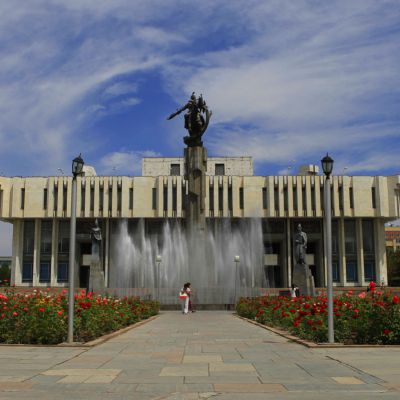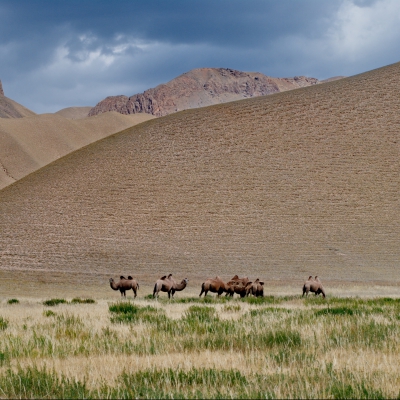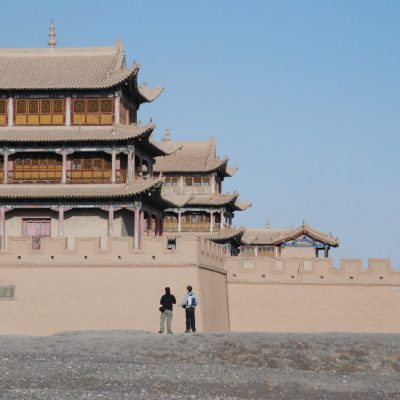China
China is officially the People’s Republic of China (PRC), it is a unitary sovereign state in East Asia and the world’s most populous country, with a population of around 1.404 billion. Covering approximately 9,600,000 square kilometers (3,700,000 sq mi), it is fourth-largest country by total area, depending on the source consulted. China, also has the most neighbor countries in the world. Governed by the Communist Party of China, it exercises jurisdiction over 22 provinces, five autonomous regions, four direct-controlled municipalities (Beijing, Tianjin, Shanghai, and Chongqing), and the special administrative regions of Hong Kong and Macau.
Since the introduction of economic reforms in 1978, China’s economy has been one of the world’s fastest-growing. As in 2016, it is the world’s second-largest economy by nominal GDP and largest by purchasing power parity (PPP). China is the world’s largest exporter and second-largest importer of goods. China is a recognized nuclear weapons state and has the world’s largest standing army and second-largest defense budget. The PRC is a member of the United Nations, as it replaced the ROC as a permanent member of the UN Security Council in 1971. Also, China is a member of numerous formal and informal multilateral organizations, including the ASEAN Plus mechanism, WTO, APEC, BRICS, the Shanghai Cooperation Organization (SCO), the BCIM and the G20. China is a great power and a major regional power within Asia, and has been characterized as a potential superpower.
History of China
It is said that Chinese civilization have started close to area of the Yellow River. One can find written history as early as Shang Dynasty, however some of the ancient documents prove an existence of the Xia Dynasty, which was before Shang. The earliest culture, philosophy and literature in China today originate in the Zhou Dynasty.
The history of China can be characterized as alternating periods of disharmony among multiple kingdoms. It is common for all dynasties to be led by a powerful statehood that eventually degrade and incompetent to rule, creating factions or creating an opening for a new dynasty to take a control.
Xia Dynasty (c. 2100 – c. 1600 BC)
Xia Dynasty`s history was controversial, since the disagreement as to whether the dynasty actually existed. The sources that prove its existence can be found in the ancient texts Shiji, or Records of the Grand Historian, and Bamboo Annals, which were written by Sima Qian (145-90 BC). The Bronze smelts dated to the Xia Dynasty (2000 BC) have been discovered in Henan province. Symbols that have been attributed as antecedent forms to modern Chinese characters have been found on pottery and other crafts from this period. The end of the Xia is said to have come about as an outcome of the Battle of Mingtiao in 1600 BC.
Shang Dynasty (c. 1700-1046 BC)
The earliest historical record of China has been found in the form of oracle bones, dating back to the 13th century BC, or during the Shang Dynasty. The Shang Dynasty had 31 kings, from King Tang to King Zhou.
Ancestor worship was quite prevalent during the Shang Dynasty. They also worshipped many gods, including gods of the sky, weather, as well as Shangdi, the god that ruled over the others.
The oracle bones were used by Chinese as divination tools at around 1500 BC. They strongly believed in a supernatural power called “Tien”, which means “Heaven”. Also, Chinese believed that Emperors are chosen by Mandate of Heaven and the ones that meet misfortune either lost or never had the favor of Tian. The co-occurring multiple disasters could symbolize the loss of the Mandate of Heaven, which would then transfer to a new ruling house.
Political transition in early Chinese history is never a smooth, direct, serial transfer. Earlier Dynasties often coexisted. For example, the early Shang existed at the same time as the Xia, and the later Shang existed concurrently with the early Zhou.
Zhou Dynasty (1046-256 BC)
The Zhou was the dynasty that lasted the longest in China. At around the 2nd millennium BC, the dynasty emerged from the Yellow River and overran Shang territory. Geographically they were to the west of the Shang.
The end of the Shang came when King Wu, head of the Zhou, and the Duke of Zhou, is brother, defeated the Shang in what is known as the Battle of Muye. Wu’s rule was legitimated by calling upon the Mandate of Heaven.
Spring and Autumn Period (722-476 BC)
Spring and Autumn Period was a time of political turmoil: Zhou military generals started to usurp power and claimed hegemony. At the same time, the Qin and others from the northwest started invading. The Zhou had to move their capital to Luoyang in the east (hence the second phase of the Zhou Dynasty is often referred to as the Eastern Zhou). Local states started ceding from the Zhou government and forming their own unions. Some officials declared Zhou as their king in name, while others started using royal titles.
Warring States Period (476-221 BC)
Further warring after the fracturing of the Zhou in the Spring and Autumn Period resulted in the emergence of seven powerful states that remained until the 5th century BC. The Zhou king still existed as a prominent figure, but possessed little ruling influence over his subjects. The final years of this era consummated in the merging of the seven states under Ying Zheng, the king of Qin.
Qin Dynasty (221-206 BC)
The Qin Dynasty is the beginning of what is referred to as the Imperial Period of China, which would last up to the Qing Dynasty. The new emperor of the Qin would rule for 12 years, during which he managed to gain control over the core of Han Chinese homeland as well as enforce a highly centralized Legalist government. The new Qin capital is located in Xianyang.
Legalism emphasized complete compliance to the power of the emperor. While militaristically effective, the doctrine would prove ineffective during times of peace. The emperor ran a brutal campaign to silence political disagreements, burning books and burying scholars.
The Qin is known for many contributions to ancient China, including the early establishment of the Great Wall of China, the centralization of government, the development of written language, and the unification of laws.
Han Dynasty (202 BC – AD 220)
The Han Dynasty came into power in 206 BC, found by Liu Bang. Bang became the emperor in 202 BC. Confucianism became the ruling ideology starting in the Han Dynasty and would remain prominent for the rest of Imperial China. China achieved much advancement in the arts and sciences, and the empire expanded as the Huns were pushed into the steppes. Trade was expanded via the Silk Road between China and the West.
The Han Dynasty started to meet difficulties when land acquisitions by elite families started to drain the tax base. A conflict occurred when Wang Mang, a usurper who founded the brief Xin Dynasty started an extensive reform which largely favored peasants. Instability was stirred up with angered landholding families. Later, Emperor Guangwu reestablished the Han Dynasty in Luoyang by gathering the support of wealthy merchant and landholding families.
The Han influence started to decline with constant feuding between advisor eunuchs and consort clans. In 184, a great conflict called the Yellow Turban Rebellion occurred, marking the beginning of an era of warlordism. This would mark the discontinuance of the Han Dynasty as China became split by the conflicts between three states vying for dominance. This would come to be known as the Three Kingdoms period.
Three Kingdoms (220 – 180)
The three states of Dong Wu, Shu Han, and Cao Wei were headed by emperors who claimed succession from the Han Dynasty. This period culminated in a large decentralization of the kind of government that was prevalent during the previous dynasties. Between 220 and 263 can be said to be a period of stable military arrangements, as opposed to the clashing that had been occurring from 184 to 220. The collapse of the stable triple arrangement occurred with the Wei’s destruction of the Shu in 263. And following that, the Jin Dynasty’s crushing of the Wei in 265, and finally the Jin’s destruction of the Wu in 280.
Jin Dynasty (265 – 420)
Before the reign of the Jin, the Sima clan was subordinate to the Wei emperor. The Wei family started to lose power and influence, since the Wei emperor Cao Shuang indulged in personal entertainment rather than engaging in state affairs. The Sima clan gained much influence in 249, and in 265 Sima Yan usurped rule from Cao Huan of Wei and began the Jin Dynasty. The Jin Dynasty would be known in two phases: the Western Jin and the Eastern Jinю
Southern and Northern Dynasties (420 – 589)
The collapse of the Eastern Jin in 420 began an era in which China was represented by many, many dynasties in the north as well as the south. The Chinese Han continued to receive and defend attacks on their northern borders from nomadic tribes, just as the Xianbei.
To the south, there were fierce debates in royal courts as to whether Buddhism should be tolerated. Near the end of this era, Buddhists and Taoists became more tolerant of each other.
Sui Dynasty (581 – 618)
The Sui Dynasty unified China by military force after about 400 years of state disharmony. Though its reign was short, it made great contributions to the Chinese state. The institutions it set up would be adopted by its successors, such as the Tang Dynasty. The Sui is similar to the Qin in that it overused its resources and is mainly associated with the arrogant second Emperor to the extent that its many achievements are understated.
Tang Dynasty (618 – 907)
The Tang Dynasty took the seat of power in 618. For China, this dynasty was a major age of prosperity and technological advances. Buddhism would become the predominant religion, with its adoption by the royal family and many more lay people.
The Tang maintained trade routes to the west and the south. Extensive trade with foreign nations took place, and many foreign merchants came to China.
The Tang Dynasty established a land-grant system called the “equal-field system.” Grants of land from the Emperor would be based on family needs, as opposed to family wealth.
Prosperity would be enjoyed not for long, because in 860 the Tang Dynasty faced a series of rebellions in China as well as from the kingdom of Nanzhao to the south. A period of political turmoil would ensue.
Five Dynasties and Ten Kingdoms (907 – 960)
During this period China was in a state of fragmentation, with five regimes rapidly succeeding one another. Ten regimes stabilized during this time, and so the period is referred to as Ten Kingdoms.
Liao Dynasty (907 – 1125)
The Khitan Liao Dynasty ruled over the regions north of China, approximately over Manchuria, modern-day Mongolia, and parts of northern modern China. Eventually, the Jurchen Jin Dynasty would conquer the Liao Dynasty.
Jin Dynasty (1115 – 1234)
The Jin conquered much of northern China from the Song Dynasty, which relocated its capital to Hangzhou. In this era the Song Dynasty is often referred to as the Southern Song Dynasty.
Song Dynasty (960 – 1279)
The Song Dynasty ruled most of China with its capital in Kaifeng (also known later as Bianjing). Military pressure to the north contributed to the Song’s technological developments, including gunpowder cannons that played a large part in Song naval victories against the Jin. Under the rule of Emperor Renzong, the Song established the first permanent navy and provided the office of Admiral at Dinghai in 1132.
Western Xia Dynasty (1038 – 1227)
In what are the provinces Gansu, Ningxia, and Shaanxi emerged the Western Xia Dynasty. The state suffered destruction at the hands of the Mongols, who founded the Yuan Dynasty.
Yuan Dynasty (1271 – 1368)
The rising military capacity of Mongols allowed them to invade and conquer the Jurchen Jin Dynasty as well as the Southern Song after. The Yuan Dynasty marked the rule of Mongols over the Chinese. During this era the Mongols were split between this who wished to return to the steppes and those who wanted to adopt Chinese traditions.
Kublai Khan, a grandson of Genghis Khan, wished to adopt the Chinese lifestyle, so he created the Yuan Dynasty.
Ming Dynasty (1368 – 1644)
During the Yuan Dynasty there was strong sentiment against Mongol rule. Natural disasters in the 1340s paved way for peasant revolts and the Yuan Dynasty was overthrown by the Ming Dynasty in 1368.
The population grew and the division of labor became more complex. Large urban centers such as Nanjing and Beijing were established. Industries expanded, most of which were specialized in silk, cotton, paper, and porcelain goods.
Despite intellectual introspection typical of the popular neo-Confucianism, Ming China had extensive foreign trade and contacts in the international scene. China’s merchants explored much of the Indian Ocean, reaching as far as East Africa.
The Ming Emperor Zhu Yuanzhang, with backgrounds as a peasant, had a vision of China to be a state vested in creating revenues from agriculture, rather than trading, as during the Song and Yuan Dynasties. Ming rulers expropriated land estates established during the Song and Mongol periods. Lands were confiscated and redistributed, and private slavery was strictly not allowed. These new laws were able to contain the worst of poverty from the recent dynasties.
Qing Dynasty (1644 – 1911)
The defeat of the Ming came by the hands of the Manchus, who were formerly Jurchen. Ming Emperor Chongzhen committed suicide when Beijing was captured by Li Zicheng’s peasant rebels in 1644.
The Qing Dynasty consolidated control over many areas, including those originally under Ming rule. Their sphere of influence grew to Mongolia, Xinjiang, and Tibet.
The later years of the Qing Dynasty were met with its incompetence in ruling properly. Evidence that attest to this fact are the many rebellions, such as the Punti-Hakka Clan Wars, Nien Rebellion, Muslim Rebellion, Panthay Rebellion, and Boxer Rebellion as well as the inability to resist unequal treaties with foreign imperial powers. While the Qing Dynasty was able to quell most of the rebellions, they were never able to do so without enormous costs and loss of lives.
Republic of China (1912 – 1949)
The Republic of China was established with the fall of the Qing’s very long reign. Sun Yatsen was the mind behind the revolutionary movement that paved way to civil unrests that unseated the Qing. Sun Yatsen became the president of a few southern provinces in 1912, but could not gain more support than the military general Yuan Shikai. In the name of peace, Sun Yatsen handed over the presidency.
Yuan Shikai was a corrupt leader who abused his powers. Many groups opposed his rule, including a few military generals who turned a blind eye towards rebellious uprisings. Yuan Shikai stepped down in 1916.
In 1919, the Treaty of Versailles imposed unfair terms on China, which resulted in the May Fourth Movement. This resulted in the rejection liberal Western philosophy and an adoption of radical thoughts amongst Chinese intellectuals.
In the 1920s Sun Yat-Sen and his forces attempted to unite the fragmented country, and he established an alliance with the Communist Party of China (CPC). Sun died from cancer in 1925, and after him Chiang Kai-shek became the leader of the Nationalist Party, or the Kuomintang (KMT). While the CPC and KMT allied with each other to eliminate Japanese occupation in China during the Sino-Japanese War (1937-1945), they turned on each other after the war due to a failure to compromise.
At the end of World War II in 1945, the Japanese ceded Taiwan to the Republic of China, effectively giving Chiang Kai-shek control of Taiwan. When the KMT were defeated by CPC forces in China in 1949, Chiang, his government, his most disciplined troops, KMT officers, and their supporters moved to Taiwan.
Kashgar
Kashgar or Kashi is an oasis city with approximately 350,000 residents in the western part of the Xinjiang Uyghur Autonomous Region of the People’s Republic of China. Kashgar is the administrative centre of Kashgar Prefecture which has an area of 162,000 km² and a population of approximately 3.5 million.
The city covers an area of 15 km². The altitude averages 1,289 m/4,282 ft. above sea level. The city is located in the western extremity of China, near the border with Tajikistan and Kyrgyzstan.
Kashgar is home to an important Muslim community (Uyghurs). Compared to Urumqi, Xinjiang’s largest city, Kashgar is less industrial and has fewer Han residents.
The city has a very important Sunday market. Thousands of farmers from the surrounding fertile lands come into the city to sell a wide variety of fruit and vegetables. Kashgar’s livestock market is also very lively. Silk and carpets made in Hotan are sold at bazaars, as well as local crafts, such as copper teapots and wooden jewellery boxes.
Sights
Kashgar’s Old City has been called “the best-preserved example of a traditional Islamic city to be found anywhere in Central Asia”, although the city is becoming more developed. At present, it is estimated to attract more than one million tourist visitors annually.
- The huge Id Kah Mosque, the largest mosque in China, is located in the heart of the city.
- An 18-m (59 ft) high statue of former Chinese leader Mao Zedong in Kashgar is one of the few large-scale statues of Mao remaining in China.
- The tomb of Abakh Khoja in Kashgar is considered the holiest Muslim site in Xinjiang. Built in the 17th century, the tiled mausoleum 5 km (3.1 mi) northeast of the city centre also contains the tombs of five generations of his family. Abakh was a powerful ruler, controlling Khotan, Yarkand, Korla, Kucha and Aksu as well as Kashgar. Among some Uyghur Muslims, he was considered a prophet, second only to Mohammed in importance.
Culture of China
About 1.4 billion people live in China, according to the World Bank, representing 56 ethnic minority groups. The largest group is the Han Chinese, with about 900 million people. Other groups include the Tibetans, the Mongols, the Manchus, the Naxi, and the Hezhen, which is smallest group, with fewer than 2,000 people.
“Significantly, individuals within communities create their own culture,” said Cristina De Rossi, an anthropologist at Barnet and Southgate College in London. Culture includes religion, food, style, language, marriage, music, morals and many other things that make up how a group acts and interacts. Here is a brief overview of some elements of the Chinese culture.
Religion
The Chinese Communist Party that rules the nation is officially atheist, though it is gradually becoming more tolerant of religions, according to the Council on Foreign Relations. Currently, there are only five official religions. Any religion other than Buddhism, Taoism, Islam, Catholicism and Protestantism are illegal, even though the Chinese constitution states that people are allowed freedom of religion. The gradual tolerance of religion has only started to progress in the past few decades.
About a quarter of the people practice Taoism and Confucianism and other traditional religions. There are also small numbers of Buddhists, Muslims and Christians. Although numerous Protestant and Catholic ministries have been active in the country since the early 19th century, they have made little progress in converting Chinese to these religions.
The cremated remains of someone who may have been the Buddha were discovered in Jingchuan County, China, with more than 260 Buddhist statues in late 2017. Buddha was a spiritual teacher who lived between mid-6th and mid-4th centuries B.C. His lessons founded Buddhism.
Language
There are seven major groups of dialects of the Chinese language, which each have their own variations, according to Mount Holyoke College. Mandarin dialects are spoken by 71.5 percent of the population, followed by Wu (8.5 percent), Yue (also called Cantonese; 5 percent), Xiang (4.8 percent), Min (4.1 percent), Hakka (3.7 percent) and Gan (2.4 percent).
Chinese dialects are very different, according to Jerry Norman, a former professor of linguistics at the University of Washington and author of “Chinese (Cambridge Language Surveys)” (Cambridge University Press, 1988). “Chinese is rather more like a language family than a single language made up of a number of regional forms,” he wrote. “The Chinese dialectal complex is in many ways analogous to the Romance language family in Europe. To take an extreme example, there is probably as much difference between the dialects of Peking [Beijing] and Chaozhou as there is between Italian and French.”
The official national language of China is Pŭtōnghuà, a type of Mandarin spoken in the capital Beijing, according to the Order of the President of the People’s Republic of China. Many Chinese are also fluent in English.
Food
Like other aspects of Chinese life, cuisine is heavily influenced by geography and ethnic diversity. Among the main styles of Chinese cooking are Cantonese, which features stir-fried dishes, and Szechuan, which relies heavily on use of peanuts, sesame paste and ginger and is known for its spiciness.
Rice is not only a major food source in China; it is also a major element that helped grow their society, according to “Pathways to Asian Civilizations: Tracing the Origins and Spread of Rice and Rice Cultures,” an 2011 article in the journal Rice by Dorian Q. Fuller. The Chinese word for rice is fan, which also means “meal,” and it is a staple of their diet, as are bean sprouts, cabbage and scallions. Because they do not consume a lot of meat — occasionally pork or chicken — tofu is a main source of protein for the Chinese.
The arts
Chinese art is greatly influenced by the country’s rich spiritual and mystical history. Many sculptures and paintings depict spiritual figures of Buddhism, according to the Metropolitan Museum of Art.
Many musical instruments are integral to Chinese culture, including the flute-like xun and the guqin, which is in the zither family.
Eastern-style martial arts were also developed in China, and it is the birthplace of kung fu. This fighting technique is based on animal movements and was created in the mid-1600s, according to Black Belt Magazine.
Ancient Chinese were avid writers and philosophers — especially during the Ming and Qing dynasties — and that is reflected in the country’s rich liturgical history.
Recently, archaeologists discovered detailed paintings in a 1,400-year-old tomb in China. “The murals of this tomb had diversified motifs and rich connotations, many of which cannot be found in other tombs of the same period,” a team of archaeologists wrote in an article recently published in a 2017 issue of the journal Chinese Archaeology.
Science & technology
China has invested large amounts of money in science advancements and currently challenges the United States in scientific research. China spent 75 percent of what the United States spent in 2015, according to the journal JCI Insight.
One recent 2017 development in Chinese science is teleportation. Chinese researchers sent a packet of information from Tibet to a satellite in orbit, up to 870 miles (1,400 kilometers) above the Earth’s surface, which is a new record for quantum teleportation distance.
Another 2017 advancement is the development of new bullet trains. Dubbed “Fuxing,” which means “rejuvenation,” these trains are high-speed transportation systems that run between Beijing and Shanghai. The trains can travel at speeds of up to 350 km/h (217 mph), making them the world’s fastest trains.
Customs and celebrations
The largest festival — also called the Spring Festival — marks the beginning of the Lunar New Year. It falls between mid-January and mid-February and is a time to honor ancestors. During the 15-day celebration, the Chinese do something every day to welcome the new year, such as eat rice congee and mustard greens to cleanse the body, according to the University of Victoria. The holiday is marked with fireworks and parades featuring dancers dressed as dragons.
Many people make pilgrimages to Confucius’ birthplace in Shandong Province on his birthday, Sept. 28. The birthday of Guanyin, the goddess of mercy, is observed by visiting Taoist temples. It falls between late March and late April. Similar celebrations mark the birthday of Mazu, the goddess of the sea (also known as Tianhou), in May or June. The Moon Festival is celebrated in September or October with fireworks, paper lanterns and moon gazing.
Nature of China
In the eastern part of Eurasia is China, being the third country in the world in terms of floor space, after Russia and Canada.9.6 million sq. Km – the area of China.China has a border with Russia, Mongolia, North Korea, Myanmar, India, Bhutan, Afghanistan, Tajikistan, Kyrgyzstan and Kazakhstan.Peoples Republic of China is located in the territory, which is washed by the waters of the Pacific, namely its seas: South China, East China and Yellow, as well as the Korean Bay.Between the mainland and the island of Taiwan passes the Taiwan Strait. Features of the nature of China due primarily to the presence of various types of climate – from subtropical to continental.
Relief
For China, characterized by the presence at the same time the highest mountain ranges – the Himalayas (the highest peak in the world – Mount Everest, 8,848 m), plains, valleys, plateaus, valleys and cirque glaciers, alpine desert. On the area with heights of more than 500m accounts for more than 85% of the country, and at an altitude of over 5000 m are about 19% of its territory.In China, you can watch a variety of surface deposits. Over time, the nature of China’s carefully created them.As a result, the concentration of these deposits came one of the largest in the world Loess Plateau in the northern part of the country.It takes its beginning at the bend of the Yellow River and has an area of 580 thousand sq. M.km.
Loess, or “huantu” – “yellow earth” in Chinese.The literal translation of the name of the loess landscape arose by chance.The color of these deposits, typical of northern China, has ordained the entire range of colors of the Yellow River.
The climate
size of the country, climatic conditions, the nature of China, its features, allow to clearly distinguish among most other Asian.Talking about the features of the country’s climate, it is necessary to focus on its diversity.In the southeast, it is subtropical, and in the north-west – continental.The interaction between the air masses of the ocean and the land south coast exposed to the monsoon.Depending on the occurrence, intensity, and monsoon distributed attenuation amount and concentration of sediments.Diametrically opposed temperature readings, and especially the nature of China are inextricably linked.In winter in the northern part of the country – Heilongjiang Province, located in a temperate climate – the temperature drops to -30 ° C, and the average temperature – 0 ° C.In summer the average temperature is – 20 ° C.And in the southern regions of Guangdong Province is much warmer – from + 28 ° C in July to + 10 ° C in January.
Water wealth of the country
slush highlands of the Tibetan plateau is an indispensable water donor country’s main rivers: Salween, Mekong, Yangtze, the Yellow River.Most of China’s major rivers originate in the mountains.Grand Canal of China, built in VII-XIII cc., Located along the coast, connects the mouth of the largest rivers of the Yellow River and Yangtze River.
not cease to admire how rich and diverse nature of China.Striking splendor of the natural reservoirs: Tianchi (Heavenly Lake), located east of Urumqi, on the slopes of Bogda ula Mansorovar – one of the most highly placed in the world of freshwater lakes, pearls Hantchzhou – West Lake.Huge rivers of the country are also fascinating. However, they are moody and can bring a lot of grief for those who live along its banks.
China and its wildlife
are inextricable link between a man and nature in China.A striking example of such continuity can be seen in Heilongjiang national park, the largest by the number of individuals of the Amur tigers.There are more than 1 thousand. In order to create conditions for the adaptation of living tigers animals being closely monitored, and measures are being taken to maintain their health.Conditions for feeding animals close to nature – namely, mainly meat and live poultry.Favorable conditions for the migration of animals.Observations of the tigers are held for more than 20 years.
Flora and fauna of China
Nature has generously endowed the Chinese variety of species and subspecies of flora and fauna.Some species of the family and the flora and fauna differ antiquity incurred.Because of the variety of flora in China can be isolated cedar and larch taiga, magnolias and camellias in the subtropics, as well as about 25 thousand. Relict species in East China.Of the inhabitants of the animal kingdom in the north-west of China can meet gazelle and Przewalski’s horse in Tibet – Himalaya bear, antelope Tibetan antelope, Kiang.In the south-west of the country can be seen flying dogs, big and small pandas, leopards and Lori.China is rich in little-known and sometimes difficult to reach the treasures of nature.Wildlife China represented the magnificence of Mount Everest, noisy cascades tiered waterfalls of Jiuzhaigou Valley, rock formations in the province of Gansu, created mainly of red sandstone and has been called “Landscape Danks.”And the list is infinitely long.
Amazing natural monuments
Chinese poet Li Bo named Mount Huangshan “yellow mountains.”This amazing natural monuments of China.You wonder, looking at the yellow, sometimes golden, tops.These mountains are high enough to some of their tops – about 2 thousand. Meters.Tops Huangshan, being literally in the clouds, creating bizarre visuals.So were given the name “Buddha’s Light”, “Cloud Sea” and others.
To complete understanding of all the wealth of nature and sometimes even a certain unreality of landscapes, of course, you only need to see.This mountain range is visited by many tourists, not only, but also of the crew.The famous director James Cameron is filming the movie “Avatar”, I saw in these places on the planet Pandora.Shooting field episodes occurred in the Chinese province of Anhui – there goes Huangshan mountain.And it is “Yellow Mountain” have to make a list of must-visit amazing places on Earth.
Destinations
Find more information about the countries on the Great Silk Road

 Русский
Русский Español
Español Français
Français Deutsch
Deutsch











